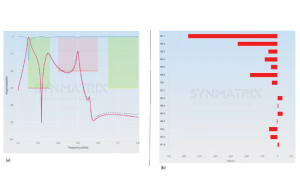Дополнительные материалы по программному обеспечению SynMatrix
Ceramic Waveguide Filter Design Using Computer-Aided Tuning
With emerging fifth generation (5G) cellular communication systems, the demand for passive components is driving the growth of massive MIMO and carrier aggregation technologies. With this growth, microwave filters are faced with a number of technical challenges including miniature sizing with a demand for better electromagnetic performance such as lower passband loss, sharper skirts and higher isolation without increasing manufacturing costs. Ceramic waveguide filter design using different dielectric materials is well researched.1, 2 More recently, Afridi et al.3 studied miniaturization by using evanescent modes to provide a wide spurious-free window. Compared to a traditional metallic or dielectric resonator filter, the ceramic-filled waveguide filter offers lower loss, higher power handling capability and a wider spurious-free window while also meeting miniature size requirements. In this article, we describe a procedure to design a dielectric-filled waveguide filter using advanced computer-aided tuning techniques.
Neural network of calibrated coarse model and application to substrate integrated waveguide filter design
In this article, we propose a novel neural network of calibrated coarse model, which can obtain the optimal filter response with as little training data as possible to synthesize the entire substrate integrated waveguide (SIW) filter. By incorporating the knowledge of filter decomposition with the inverse neural network, we build a coarse model that can synthesize the dimensions of a SIW filter. However, the SIW structures are subject to a potential leakage problem due to the periodic gaps, the results of the coarse model are very different from the ideal response. We propose a novel calibrated neural network from the perspective of the coupling matrix to correct the errors generated in the coarse model. In addition, this article also proposes an equivalent de‐embedding technique, which is simpler than the thru‐reflect‐line calibration technique to accurately extract the scattering parameters of the SIW discontinuities. An H‐plane fifth order SIW filter is synthesized by the proposed model. The result shows that the SIW filter that is very close to the ideal response can be synthesized with only a few hundred training data.
Больше статей на сайте SynMatrix
